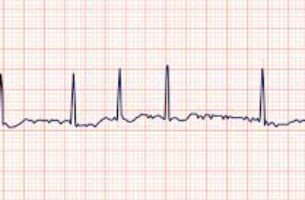What are the most common tablets for atrial fibrillation (AF) ECG showing AF Here are the top 10 most common drugs for atrial fibrillation (AF). There are tow main groups. Most people will be on both. Drugs to thin the blood (anticoagulants) These are given to prevent strokes. Warfarin: A vitamin K antagonist used for […]
Read MoreHow to change or cancel an NHS hospital appointment Please do not ring your GP They cannot change or cancel things for you. You need to do it. To change or cancel an NHS hospital appointment, there are several options: Use the NHS App Log in to the NHS App and go to “Your health” […]
Read MoreIs there an alternative to a GP? Yes, there are several alternatives to traditional GP services, depending on your needs. Some options include: Urgent treatment centre (UTC) = this is a facility (often at a hopsital) where you can go to if you need urgent medical attention, but it’s not a life-threatening situation Note. There […]
Read MoreAre aches and pains related to the weather? It is not clear. There’s no conclusive evidence that weather changes directly cause joint pain, despite many people claiming they can forecast the weather based on their aches. One theory of how there could be a link, is that shifts in atmospheric pressure might trigger these sensations. […]
Read MoreLong COVID: key facts for doctors Here are key facts on Long Covid for doctors. Definition Long COVID, also known as Post-Covid Syndrome, affects patients who experience persistent symptoms beyond 12 weeks. Prevalence It is thought 5-10% of COVID-19 patients develop Long Covid. Symptoms These are non-specific but include fatigue, breathlessness, muscle pain, and cognitive […]
Read MoreLong Covid: Basics About Long COVID Long COVID is defined as a chronic condition that occurs after SARS-CoV-2 infection and is present for at least 3 months Long COVID occurs more frequently in people with severe COVID-19, but it can happen to anyone who has been infected Long COVID includes a wide range of symptoms […]
Read MoreHow to use NHS services The NHS is very large, and the biggest employer in Europe. It is so large and complicated, it is hard to know which part of the NHS to use. This page covers the most important 20 servcices available. Yes, it is quite confusing which one to choose. If you are […]
Read MoreNHS services: alternatives to GP and hospital: which should I choose? The NHS is very large, the biggest employer in Europe. It is so large and complicated, it is hard to know which part of the NHS to use. This page describes the main options, and which is best for which problem. Pros and cons. […]
Read MoreWhat is the 5:2 (and 4:3) diet? The 5:2 diet is a type of intermittent fasting diet. Here’s how it works: Eat normally (but sensibly) for 5 days of the week (ideally under 2500 calories). Restrict calorie intake to 500-600 calories on the other 2 days of the week, which can be any days but […]
Read More5 Common Medical Errors – And How to Beat Them (aka: MACK-B) From MyHSN: Learn. Improve. Repeat Let’s face it – medical errors happen. They are frustating, sometimes heartbreaking, but they are also a powerful learning tool. We call them MACK-B errors: Memory Applying rules Communication(x3) Knowledge/skills Bias Good news? You can actively reduce all […]
Read More









